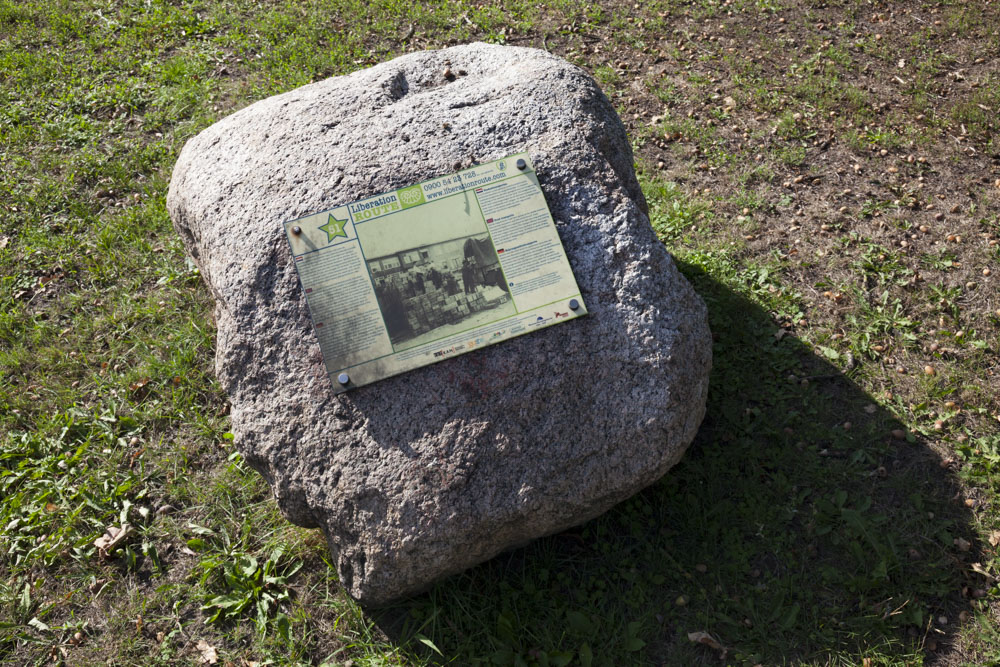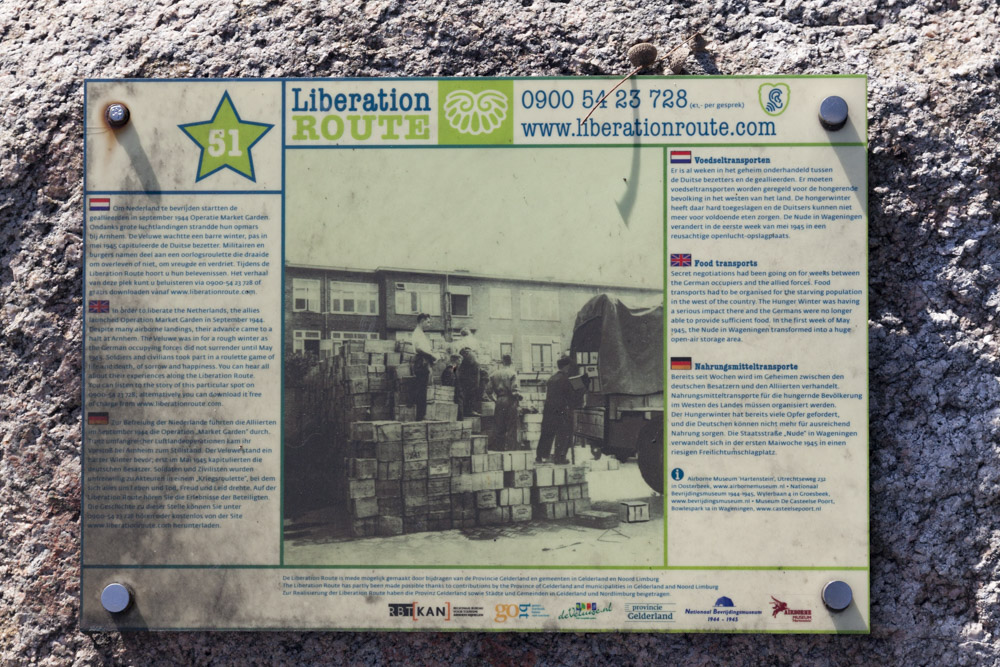Liberation Route Marker 051: Food transports
Food transports
In April 1945 the population of the Western part of the Netherlands was starving. The Allies decided to negotiate food aid. The Germans cooperated. In the first week of May part of the town of Wageningen transformed into a huge storage area. From there 750 Canadian lorries started to distribute food.
Although the first warnings of looming food shortages in the Western part of the Netherlands had reached the Dutch government in exile in September 1944, the problem could not easily be solved. Initially it was hoped that the Netherlands would be liberated before the situation became critical. The failure of Operation Market Garden put an end to these hopes.
On 17 September 1944 the Dutch government in London called for a general railway strike in the Netherlands in an effort to support the Allied advance. In retaliation, the Germans refused to allow food shipments to the civilian population in the Western part of the country.
The winter of 1944-1945 was unbearably cold. The result was wide-spread hardship and starvation in the west of the Netherlands. By April 1945, people were dying by the score. The Allies decided to negotiate food aid with the Germans. These negotiations took place in the small village of Achterveld on 28 April 1945 and resulted in food drops by bombers, provisions being shipped in by boat and distributed by road. Canadian lorries brought 300 tons of food to an area called Nude in the town of Wageningen every day. From there, Dutch lorry drivers transported the food to distribution points. The Canadians provided 750 3-ton vehicles and huge amounts of food parcels were piled up along the road from Wageningen to Rhenen. The deliveries started on 2 May 1945. One week later, 30 trucks passed the demarcation line every thirty minutes.
Audiospot - Food transports
Liberation Route Europe is a certified Cultural Route of the Council of Europe. With hundreds of sites and stories in nine European countries, the route links the main regions along the advance of the Allied Forces in 1943-1945.
The entire route consists of themed routes that can be travelled by by hiking, walking, cycling and car. These routes pass numerous historical and interesting sites and tell stories from a multitude of perspectives that were important in the final phase of World War II.
Many routes feature listening spots, offering the opportunity to listen to a historical story at a location. In addition, many ‘Vectors of Memory’ have been placed, indicating that the passer-by is on one of the Liberation Routes.
The routes can be found on the Liberation Route Europe website or in the app through which many stories can also be listened to.
Do you have more information about this location? Inform us!
Source
- Text: TracesOfWar & Liberation Route Europe
- Photos: Arjan Vrieze
Nearby
Museum
- The Liberation Hall Museum "De Casteelse Poort" Wageningen - Wageningen
- Visitor Center And Museum Dutch War Cemetery Grebbeberg - Rhenen
- Betuws War Museum "The Island" 1944-1945 - Heteren
Point of interest
- Hotel De Wereld (Hotel the World) Wageningen - Wageningen
- Noda Farmhouse Rhenen - Rhenen
- Information Sign Evert Wilhelmus Hoksbergen - Randwijk
Monument
- Memorial Walter B. Dewe Wageningen - Wageningen
- War Memorial Wageningen - Wageningen
- Jewish Memorial 'Levenspoort' Wageningen - Wageningen
Cemetery
- Dutch War Graves RC Cemetery De Leeuwer Enk - Wageningen
- Commonwealth War Graves General Cemetery De Leeuwer Enk Wageningen - Wageningen
- Jewish War Graves New Jewish Cemetery Wageningen - Wageningen
Remembrance Stone
- Memorial stones Maurice and Yetty Elzas - Wageningen
- Memorial Stones Bowlespark 2 - Wageningen
- Stumbling Stones Bovenweg 25 - Bennekom
Fortification
- Kolff-Casemate KLF001 Maneswaard - Opheusden
- Grebbe Line - S3 Casemate GLZ12 - Rhenen
- Grebbe Line - PAG-Casemate P11 Grebbesluis - Rhenen






